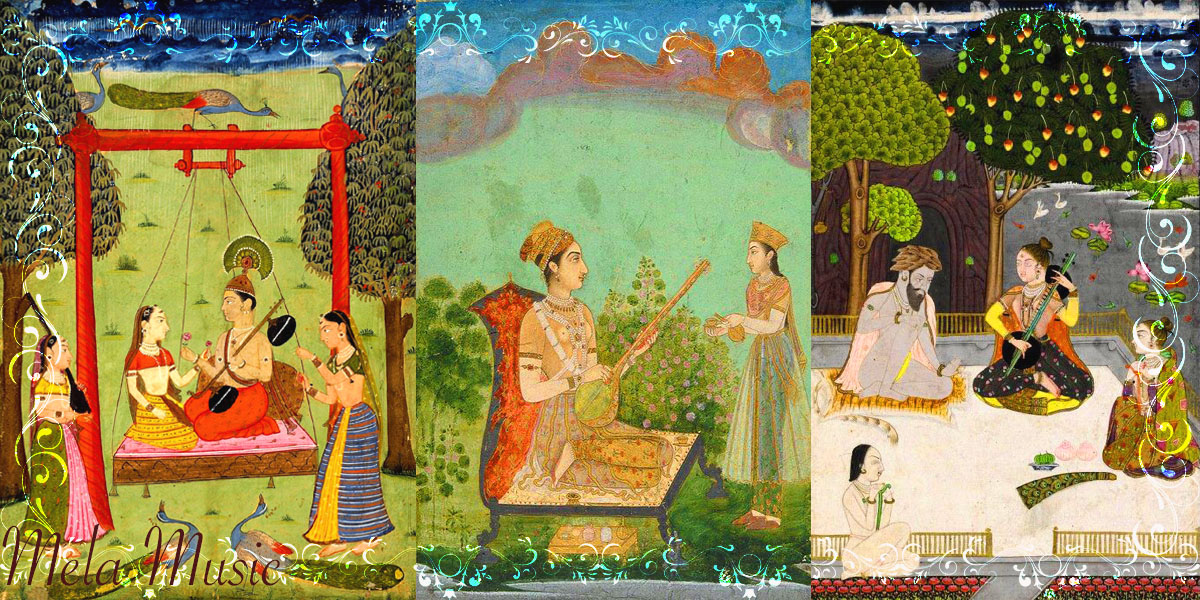
Bandish, in the realm of Indian classical music, encompasses various definitions depending on the context.
In vocal compositions, a bandish refers to a lyrical composition that vividly portrays the beauty of a raga through its melodic and rhythmic intricacies. It serves as a medium to express the essence of the raga.
In instrumental music, the term bandish represents a fixed and melodic composition that embodies the essence of a specific raga. It is performed with rhythmic accompaniment by instruments such as tabla or pakhawaj, accompanied by a steady drone and melodic support from sarangi, violin, or harmonium.
Bandish also serves as the literary element in the music, providing a structured framework for vocal performances. In the past, many gharanas (musical lineages) safeguarded their bandishes within the family to prevent their distortion through inconsistent renditions.
These are the 4 parts found in a Bandish:
[1] Asthayee – The asthayee, which constitutes the initial section of both vocal and instrumental compositions, derives its name from the root verb “Sthaa,” meaning “to stay.” The term “Sthayee” serves as the noun form, signifying “that which is stable,” and from it emerges the dialectic form known as “Asthayee.” The essence of “stability” lies in the alignment of raga music with the lyrical content. Typically, the asthayee spans from the tonic SA, ascending up to the Nishad (NI) of the middle octave, and then returns to the tonic, serving as an announcement for the subsequent antara section.
[2] Antara – In both vocal and instrumental compositions, the antara signifies the second and often concluding part. Its name is derived from the root word “antar,” meaning “difference.” As the name suggests, it brings about a distinction from the asthayee section. The antara spans across the middle notes of the middle octave (madhya saptak) and extends towards the higher octave (taar saptak). However, it ultimately returns to the tonic SA, creating a pathway for the reemergence of the asthayee section once again.
[3] Sanchari – This stanza represents the third section of a dhrupad composition. In the Sanchari section, the notes are structured in both ascending and descending patterns. The melodic scale of the Sanchari typically spans from the lower ocatve (mandra saptak) SA to the higher octave (taar saptak) SA within the upper octave.
[4] Abhog – In dhrupad compositions consisting of four sections, the final part is referred to as the abhog, which translates to “finale” in literal terms. Derived from the root word “Bhuj,” meaning “to fulfill,” abhog signifies a state of complete absorption. Musically, the abhog typically encompasses the melodic range from the middle notes of the middle octave (madhya saptak) to those of the upper octave (taar saptak). It is customary for the abhog section to prominently feature the name or pseudonym of the composer, adding a personal touch to the composition.
Contemporary khayal bandishes and their instrumental equivalent, known as gat, often do not incorporate the sections of sanchari or abhog. Dhrupad renditions always present all four parts of a bandish.
Content Provided By: Sangeetpedia
